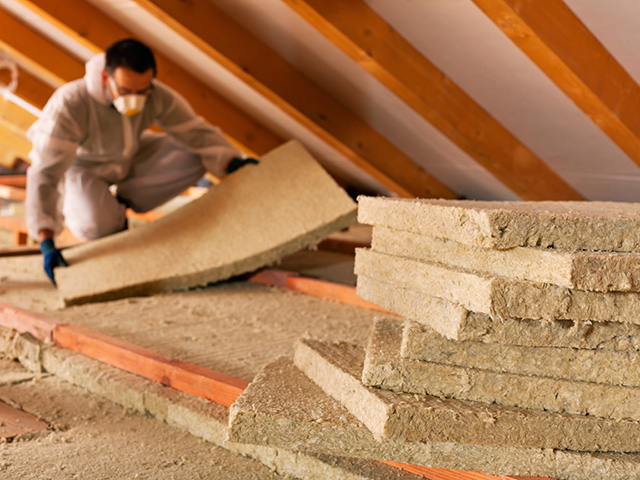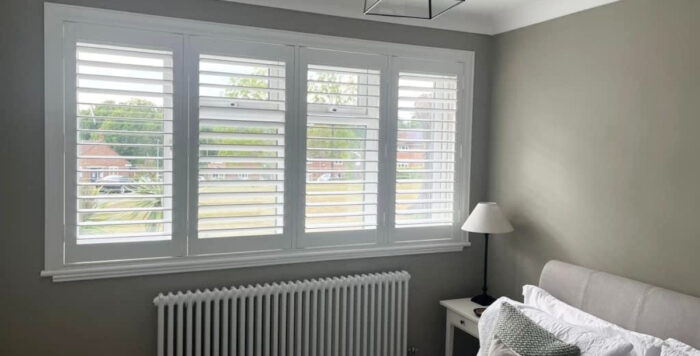What are R values for insulation and why do they matter?
Our guide to R values explains what they tell us about building materials' insulating properties. And how they relate to K and U values
R values, K values, U values, even lambda values: when it comes to insulation, there’s a whole alphabet soup of confusing terms to get our heads around. Here’s our guide to what all the letters mean and what you need to know about R, K and U values in relation to building insulation.
Thermal resistance
In simple terms, the R value of something is a measure of how much insulation it provides: the higher the R value, the more insulation. In more technical terms, the R value of a material is a measure of how well it resists heat being conducted through it. The R stands for the ‘resistance’ in ‘thermal resistance’.
Getting really technical, the R value is the ratio of the temperature difference between the two faces of a material to the rate of heat flow, per unit area. R is measured in metres squared Kelvin per Watt (m²K/W).
The R value will vary with the thickness of the material, because a thicker piece of the same material will provide more insulation and therefore have a higher R value. A material’s R value is calculated by dividing its thickness by its K value (see below – the measure of its thermal conductivity). This tells you how well it resists heat transfer at a specific thickness. The best insulation has a high R-value at a low thickness.

Apparent R value
Sometimes the other methods of heat transfer – convection and radiation – have a significant bearing on a material’s thermal resistance. In these cases, a measure called ‘apparent thermal conductivity’ or apparent R value is used, which captures the effects of all three kinds of heat transfer. But always the same rule applies, the higher the R value the better the insulation.
K value – thermal conductivity
The K value of a substance measures its intrinsic thermal conductivity i.e. how well it conducts heat, regardless of its thickness. This is also known as the lambda (the eleventh letter of the Greek alphabet) value. All insulation and heat-loss calculations are ultimately based on K values.
K values are measured in Watts per metre Kelvin (W/mK).
The lower the K value, the slower heat will move across a material and the better its insulating properties. To give you an idea of relative values, glass fibre insulation has a K value of about 0.044 W/mK, while concrete has a K value of about 1.5 W/mK.
The K value will be printed on the packaging of a building material or on the manufacturer’s website or the product data sheet.
U value
As we work our way through the alphabet of lettered values, there’s another one that’s useful when we’re looking at insulation, and that’s U value. U value is used to calculate how much heat is lost from a building through a material. The U value of a material is its heat transfer coefficient, or thermal transmittance coefficient.
U value is the inverse of R value. The U value of a material or component is the amount of heat it loses through conduction: the rate of heat transfer over a given area if the temperature difference is one degree Kelvin. The lower the U value, the slower the heat moves through the material, and the greater its insulating properties.
It is measured in Watts per square metre Kelvin (W/m²K).
All the various elements of a building from roof lights to party walls have a U value. The U value of each is determined by what is is made from, how thick it is, and any insulation or coatings that have been applied.
To calculate the U value of a single material we divide 1 by its R value, ie U = 1/R. To calculate the U value of a building element you have to add together the R values of all the elements to get a total resistance (Rt). Then U = 1/Rt. More refined versions of the calculation take account of convection and radiation heat losses, giving us U = 1/R + convection heat losses + radiation heat losses.
The calculations can get pretty complex and are probably best left to the experts – or at least experts equipped with specialist U value calculation software. You should be able to get the U value of most building materials from the manufacturer.
Building regs

Image credit: Pexels/Nothing Ahead
Ultimately, one reason U values are important is because they feature prominently in building regulations, which set out target and maximum U values for lots of different aspects of building projects, both new build and retrofit. This table shows the latest U values required for buildings in England.
| New build | Extension to existing building (W/m7K) | Refurbishment of existing building
(W/m7K) |
|
| Roof | 0.11 | 0.15 | 0.16 |
| Wall | 0.18 | 0.18 | 0.30/0.55 (depending on type of wall) |
| Floor | 0.13 | 0.18 | 0.25 |
There are similar rules in Wales, Northern Ireland and Scotland.
Similarly, Passivhaus has its own requirements for U values. These prescribe a maximum U value of 0.15 W/m²K for walls and 0.80 W/m²K for windows.
Here’s a video that helps explain it all.









